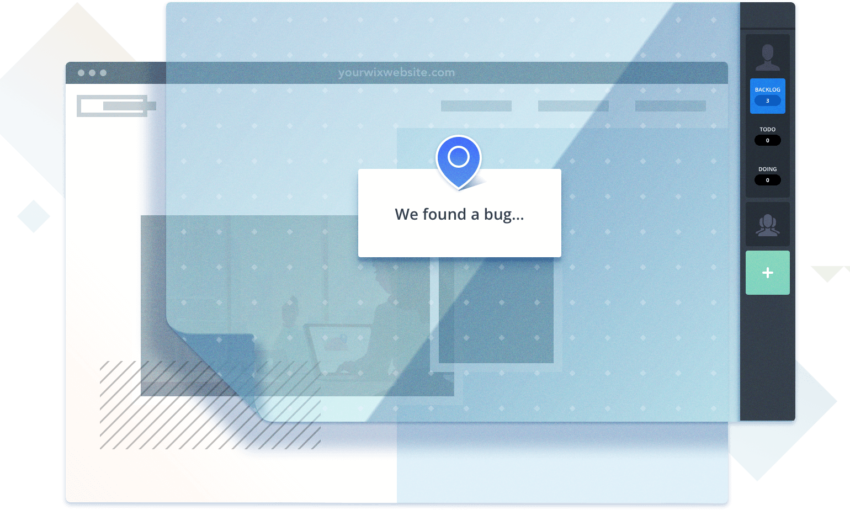Several years ago, I enrolled in a self-improvement course which taught me a concept I found helpful for getting more clients for my freelancing career.
If you want to “hit” a goal, you need to focus on two things:
- Trying to hit the goal as much as possible, called goal intensity.
- Trying to increase your chances for each hit, called goal efficiency.
Let me explain with a simple example. Let’s say your goal is to get ten dates this month. How do you go about doing it? You could spend all your time at the gym, attending self-improvement courses, and so on. These things won’t help you get dates directly, but when the time comes to ask someone out, these things will indirectly help you increase the chances that they’ll say yes.
The Freelance Designer Toolbox
Unlimited Downloads: 500,000+ Web Templates, Icon Sets, Themes & Design Assets
All starting at only $16.50 per month
Nothing will happen if you don’t ask anyone for a date, though! The best results will be achieved if you focus on doing both things to indirectly attract dates (goal efficiency) and actually asking for a date (goal intensity).
Getting more clients has many things in common with dating. They’re both about two people, and the first person (the pitcher) is trying to get the other party to do something (go on a date / accept their proposal for a business cooperation).
If you want to get more clients, the same two principles to “hit a goal” apply; you need both to indirectly improve your chances of getting them (efficiency) and going on and pitching to people (intensity).
Persuasion Skills Help Goal Efficiency
And boy, do these persuasion skills help a lot. Knowing some of the most powerful persuasion principles out there can help you craft a better pitch, communicate more efficiently with clients, in other words, increase your chances of them saying “YES” to your request.
Selling your web design product or service should be easier.
Explain what Your Design Product or Service is Before Persuading
Many people get so focused on the art of persuasion when trying to get clients to buy their design products that they forgot about one basic thing: explaining what their product/service is in the first place.
If you’ve read any sales letters or landing pages, this trend is pretty obvious. They start with asking you questions like ‘would you like more women’ or ‘would you like more clients’ and explaining why more women/clients are a good thing, how your life would change and so on.
What they forget to explain is what they offer in the first place. You often get the impression that you’re buying a ‘magic pill’ that will solve that particular problem.
Catchy phrases like “we bring your designs to life” or “give fresh breath to your new web design” or “experience comes with expertise” don’t help much in explaining what you actually do, and putting that on the front page is just going to confuse first-time visitors.
Read on… but You are Free to Stop
What I just did here is implementing, what Spring.org.uk (one of the best blogs on psychological research) says is the “easiest persuasion technique that can be implemented in any situation.” This technique, according to a review of 42 studies, has been shown to nearly double the chances someone will say “yes” to your request (that includes requests to your design clients!)
The principle is pretty simple; you are basically reaffirming people’s freedom to choose.
If you’re from the old-school bunch who thought persuasion is about coercing people to do something against their will, do yourself a favor: forget that and try to erase it from your memory. If you want to, of course.
Here are some examples of this technique:
Say you are negotiating a deal with someone you’re trying to persuade to re-sell your web design product. You have presented your product, giving them a crystal clear picture (remember?) of what it is. Then you’ve started giving them various reasons why they should re-sell your product. At the end you may say: I am pretty sure our product will be a great fit for you, please call this number if you’re interested.
Using this technique, you can add a little twist by saying something at the end like: “but you are free to choose any other product if you’re not satisfied with us” or “do not feel obligated to buy this from us, feel free to weigh your options”.
This may sound like encouraging them not to choose you. Which is totally incorrect. You’re merely reaffirming what’s in their mind already (I’ll take a look at this person and compare them against there competitors to see who is better).
Imagine if someone said this to you. You’re already starting to see the benefits of a sentence like this. That person will appear to be more trustworthy and credible (one rationalization you may use is: why else would they mention this if they were not sure their product was top notch?) and appear friendlier and non-pushy (would you react positively to someone who repeats all the time ‘my products are the best?’).
How to Best Convey Disadvantages About Your Product
Robert Cialdini, who’s the biggest name in the social psychology field when it comes to persuasion, mentions one concept that will help you convey disadvantages about your product or service without putting yourself in a disadvantaged position.
Let’s do a little experiment, read these two sentences:
- “Our product is 2 years old, but we are still ahead of our competitors newest products.”
- “We are still ahead of our competitors newest products, but our product is 2 years old.”
They convey the same information, just in a different way.
The first states the weakness first, and then the strength of the product. The second does the reverse.
Which one do you think is more likely to produce a positive impression? Take your guess.
The right answer is “the first one.” Studies have shown that when lawyers mention a weakness in their case before the opposite side does, jurors view that lawyer as more trustworthy and honest.
There’s just one drawback to this approach: When mentioning your weakness, don’t go to extremes. This works for minor weaknesses. Saying “Our product hasn’t been updated for ten years, but we’re still ahead…” is going to make you look dumb. Keep a good balance.
How we applied this when selling our design services: When we used to sell logos, one of our weaknesses was the delivery time. We couldn’t deliver in less than ten days, and many of our competitors could. This was clearly a disadvantage.
So instead of just saying it plainly, we said “We can’t deliver the logo in less than ten days, but that means we have more time to focus on the details and the specifications you gave us” or “but that means we deliver more detailed and better logos than our competitors.”
We were telling the truth since ten days really gave us more time to process in our minds what the client actually wanted, and with each new day, new ideas emerged to make the logo better.
People Compare Everything all the Time
We can’t help it. If you sell a web design service, people will compare it with other web design services. If you sell a product related to web design, people will compare it to other products in the same category.
Now, you can either use this to your advantage or leave it up to random factors to decide how people compare you to others.
One way to use this relativity principle is to add various options for your products/services. If you sell web design services, you can offer something like a “light package,” a “small business package” and a “big business package.” This way you’ll “trick” people into comparing your products with each other, instead of focusing on comparing them with other products/services.
That is the first step. The second step is to make one of those options an obvious choice. A tactic many magazines use is to offer a print subscription for, say, $110, offer an online edition for, say, $90 and then offer print+online for $110.
The third option is probably the best choice since with the “bundle” package you’re getting the online version for just $20 instead of $90 alone. Or take the famous example of the Economist who used to offer a print edition for the lowest price, an online edition for a more expensive price and then print+online for the same price as the online version.
Of course, nobody chose the “online only” version, and there was no rational reason for it to be there. But that option helped quadruple the sales of their print+online option.
Remember, people compare everything that can be compared in a category. If you sell a web-design product or service, offer 1 or 2 inferior options and then a third option which is an “obvious choice.”
If you charge by the hour, for example (say you charge $30 per hour), you can have an option where they could pay $30 and get 1 hour worth of service, 5 hours for $130 and 7 hours for $150. The 7 hours package would seem to be the obvious choice since for an extra $20 they get an extra two hours.
A Trip to Rome or a Trip to Paris? A Static Site or a CMS-Based Site?
Imagine someone offered you to pay you a trip and you either had to choose Rome or Paris. They’re both appealing places, and for most people, it’s difficult to choose between them.
Psychologists have found a way to make you more inclined to choose one of these options, however. If you simply add an inferior third option like “Paris without breakfast” (assuming you had breakfast included in the first two arrangements), you are suddenly more likely to see Paris as the more attractive option than Rome or the “inferior” Paris. This is a powerful principle that can be used in web design.
Do people who buy from you face indecision somewhere in the buying process? Maybe they’re unsure whether they should get your package with five static pages for $300 or four pages on a content management system for the same price.
One way you can encourage them to choose an option you’d like is to add an inferior package for one of these two options. If you want people to buy more of the content management system package, add a “three pages for $270” option. Or “four pages on a CMS without installation support for $290” (assuming you offered installation support). Your customers will probably say: Installation support for only $10? What a bargain!
If you’re selling a design package, you could tweak your offer based on the number of revisions you offer. A package with three revisions for $150. A package with ten revisions for $170. Make sure there is that one package that’s CLEARLY inferior to the others that nobody will buy.
Your competitors will wonder “why the heck did they put that stupid choice there,” and you’ll be smiling all the way to the bank having used one of the most powerful psychological principles which profoundly influences human behavior.
This post may contain affiliate links. See our disclosure about affiliate links here.




